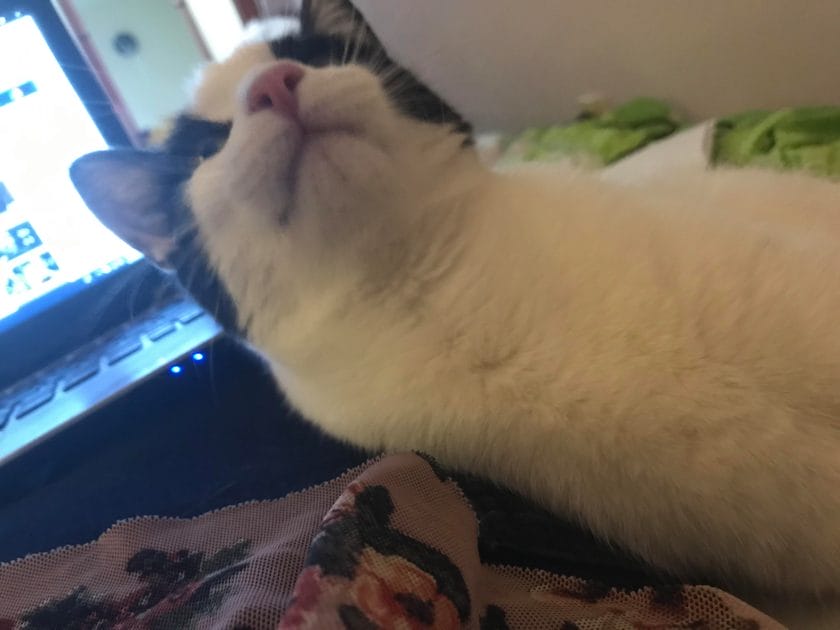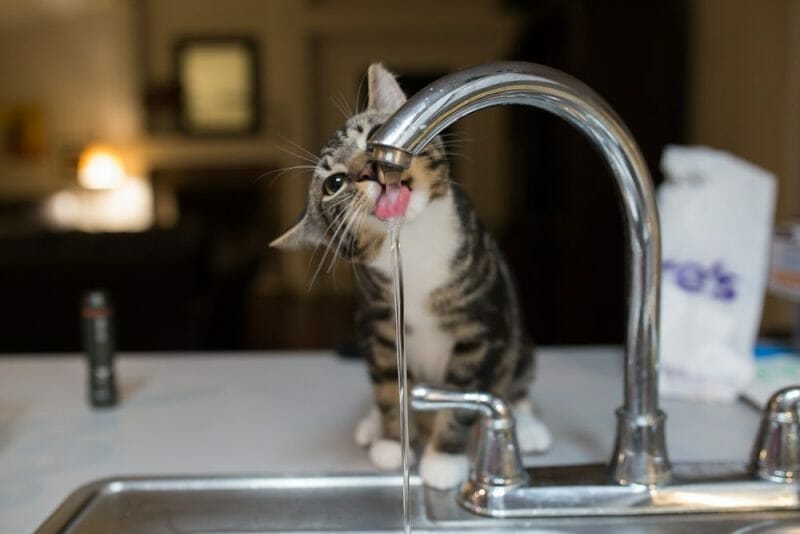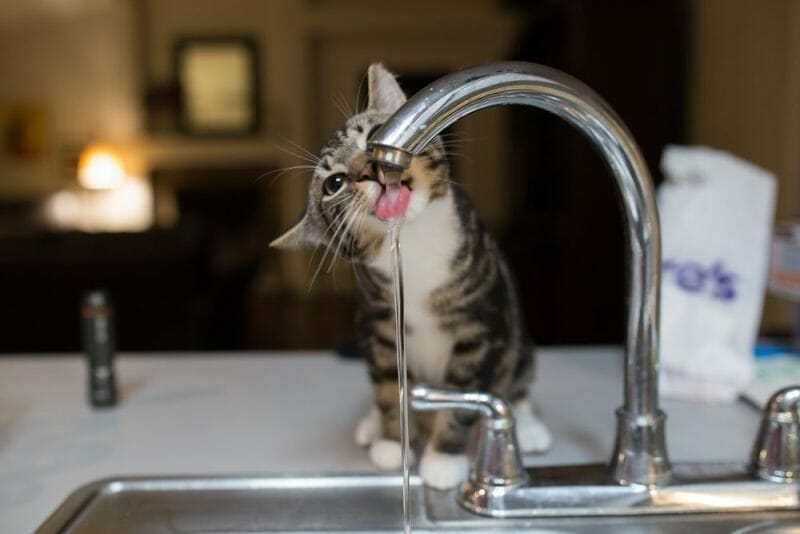Cats, with their captivating charm, have earned a special place in our homes and hearts.
Beneath their self-reliant demeanor, however, lies a crucial aspect often overlooked – their hydration.
Maintaining proper hydration is pivotal for a cat’s overall health, impacting everything from their coat to kidney function.
In this guide, we’ll uncover the keys to feline hydration, decoding signs of dehydration and offering effective strategies to ensure your cat’s vitality. Join us in this journey to prioritize your cat’s well-being through optimal hydration.

Importance of Water for Cats
Water is an essential component of a cat’s overall health and well-being. Just like humans, cats require an adequate intake of water to maintain proper hydration and support their bodily functions. In this section, we will explore the importance of water for cats, highlighting why it is crucial for their overall health.
1. Hydration
Proper hydration is essential for cats as it helps maintain their body temperature, lubricates joints, aids in digestion, and facilitates the elimination of waste through urine and feces.
Cats are generally not big drinkers, and their natural diet, which consists of mostly meat, does not provide them with a high water content.
Therefore, it is crucial to encourage cats to drink an adequate amount of water to prevent dehydration.
2. Kidney Function
The kidneys play a vital role in filtering waste products from the blood and maintaining a proper balance of electrolytes in a cat’s body.
Adequate water intake helps to support the optimal functioning of the kidneys and prevent the development of kidney-related problems such as urinary tract infections, bladder stones, and kidney disease.
Cats who consume an insufficient amount of water are at a higher risk of developing these health issues.
3. Urinary Health
Cats are prone to urinary tract problems such as cystitis, crystals, and urinary blockages.
These conditions can cause discomfort, pain, and even life-threatening complications. A sufficient water intake promotes urinary tract health by diluting the urine, preventing the formation of crystals, and aiding the removal of any potential bacteria or debris from the urinary system.
Increased water consumption can help reduce the risk of urinary tract issues in cats.
4. Digestive Health
Water plays a crucial role in maintaining a healthy digestive system in cats. It aids in the breakdown and absorption of nutrients from food, prevents constipation, and promotes regular bowel movements.
Insufficient water intake can lead to digestive problems, including constipation, which can be uncomfortable and painful for cats. Ensuring that cats have access to fresh and clean water at all times can help prevent digestive issues.
5. Preventing Obesity
Water can also play a role in weight management for cats. It is calorie-free and can help cats feel fuller, reducing their overall calorie intake.
Adequate water consumption can prevent overeating and contribute to maintaining a healthy weight. Obesity in cats can lead to various health issues, including diabetes, joint problems, and heart disease.
Encouraging cats to drink water regularly can help prevent obesity-related complications.
Signs of Dehydration in Cats
Dehydration can be a serious health issue for cats, and it’s important for pet owners to be able to recognize the signs. In this section, we will discuss some common symptoms of dehydration in cats so that you can take prompt action if you notice any of these signs in your feline friend.
1. Loss of Appetite:
One of the first signs of dehydration in cats is a decreased appetite. If your cat is not showing interest in food or is eating less than usual, it could be an indication that they are dehydrated.
2. Increased Thirst:
Cats naturally have a low thirst drive, so if you notice your cat drinking more water than usual, it could be a sign that they are dehydrated. Increased water intake is the body’s way of trying to compensate for the lack of hydration.
3. Dry Mouth and Gums:
Dehydrated cats often have dry and sticky gums. You can check your cat’s gums by gently lifting their lip. Normally, a cat’s gums should be moist and pink. If they appear dry or pale, it may be a sign of dehydration.
4. Lethargy and Weakness:
A dehydrated cat may become lethargic and show signs of weakness. They may sleep more than usual and lack energy for their usual activities.
5. Loss of Skin Elasticity:
To check for dehydration, gently pinch the skin on the back of your cat’s neck. If the skin does not quickly return to its normal position and instead remains in a tent shape, it could be an indication of dehydration.
6. Sunken Eyes:
Dehydration can cause the eyes to appear sunken or hollow. If you notice a change in your cat’s eye appearance, it’s important to monitor their hydration levels closely.
7. Decreased Urination:
Cats will produce less urine when they are dehydrated. If you notice a decrease in the frequency or amount of urine in the litter box, it could be a sign of dehydration.
8. Weight Loss:
Chronic dehydration can lead to weight loss in cats. If your cat is losing weight without any apparent reason, it’s essential to consider dehydration as a possible cause.
9. Panting:
Cats do not typically pant like dogs, so if you notice your cat panting excessively, it could be a sign of severe dehydration or an underlying health issue. Immediate veterinary attention is necessary in such cases.

Tips to Encourage Cat Hydration
Here are some tips to help you ensure that your feline friend stays hydrated:
1. Provide Fresh Water
Make sure your cat has access to fresh, clean water at all times. Cats are known to be picky about the cleanliness of their water, so ensure that you change it daily and keep their water bowl clean.
2. Offer Multiple Water Sources
Place water bowls in different areas of your home to provide your cat with multiple options to drink from. This is especially helpful if you have a multi-level home or if you have more than one cat.
3. Consider a Cat Water Fountain
Many cats are attracted to moving water, and a cat water fountain can be a great way to entice them to drink more. The sound and movement of the water can be appealing to cats and can encourage them to drink.
4. Wet Food Diet
Incorporate wet food into your cat’s diet. Wet food has a higher moisture content compared to dry kibble, which can help increase their overall hydration levels. Additionally, the aroma and flavor of wet food may entice your cat to consume more liquid.
5. Add Water to Food
If your cat prefers dry food, consider adding some water to their kibble to increase its moisture content. This can help in providing additional hydration and can be especially beneficial for cats who are reluctant to drink water.
6. Use a Wide and Shallow Water Dish
Some cats do not like their whiskers touching the sides of a deep water dish. Opt for a wide and shallow dish that allows your cat to comfortably drink without any sensory issues.
7. Experiment with Water Temperature
Some cats prefer their water at room temperature, while others may enjoy it slightly chilled. Try offering water at different temperatures to see what your cat prefers.
8. Make Water More Appealing
Some cats may be more inclined to drink flavored water. You can try adding a small amount of low-sodium chicken broth or tuna juice to their water to make it more enticing.
9. Monitor Water Intake
Keep an eye on how much water your cat is consuming on a daily basis. If you notice a sudden decrease in their water intake, it could be a sign of an underlying health issue, and you should consult your veterinarian.
10. Consider a Water Drinking App
There are certain apps available that track your cat’s water intake. These apps can be helpful in monitoring your cat’s hydration levels and reminding you to refill their water bowl regularly.
The Best Water Bowls for Cats
Providing your cats with a suitable water bowl is crucial to encourage them to drink an adequate amount of water. With so many options available on the market, it can be overwhelming to choose the best water bowl for your feline friend.
In this section, we will explore some of the top water bowls for cats, considering factors such as material, size, design, and functionality.
1. Stainless Steel Bowls
Stainless steel water bowls are a popular choice among cat owners due to their durability and sanitary properties.
These bowls are resistant to rust and corrosion, making them long-lasting and easy to clean.
Additionally, stainless steel is non-porous, which means it does not harbor bacteria or odors. This makes it a safe and hygienic option for your cat’s water bowl.
2. Ceramic Bowls
Ceramic water bowls are another excellent choice for cats. They are heavy and stable, which prevents tipping and spilling.
Ceramic bowls are also resistant to scratches, making them durable. Furthermore, ceramic is a non-porous material, ensuring that no harmful bacteria or odors are retained.
These bowls often come in a variety of appealing designs that can complement your home decor.
3. Automatic Water Fountains
If you’re looking for a more interactive and enticing option for your cat, an automatic water fountain might be the perfect choice.
These fountains provide a continuous flow of fresh and filtered water, which is more appealing to cats than stagnant water. The flowing water mimics a natural water source, encouraging your cat to drink more.
Automatic water fountains also help to keep the water clean and oxygenated, reducing the risk of bacteria growth.
4. Elevated Bowls
Elevated water bowls have gained popularity for their ergonomic design, which can benefit cats with certain health conditions, such as arthritis or digestive issues.
These bowls are raised off the ground, allowing cats to maintain a more comfortable posture while drinking. The elevated height also helps to prevent strain on the neck and joints.
Additionally, elevated bowls can reduce the amount of debris or dirt that may get into the water, keeping it cleaner for longer.
5. Non-Slip Bowls
If your cat tends to push their water bowl around or play with it, a non-slip bowl is a practical choice.
These bowls have a rubber or silicone base that prevents them from sliding or tipping over. Non-slip bowls provide stability, ensuring that your cat can access their water easily without any accidents or mess.
Choosing the right water bowl for your cat is crucial in promoting their hydration and overall health. Stainless steel bowls offer durability and hygiene, while ceramic bowls provide stability and aesthetic appeal. Automatic water fountains offer a continuous flow of fresh water, while elevated bowls cater to cats with specific health conditions. Non-slip bowls are a practical choice for cats that tend to be playful or active. Consider your cat’s needs and preferences when selecting the best water bowl to ensure they stay well-hydrated and happy.
How can I keep my cat hydrated?
Ensure your cat has access to fresh, clean water at all times. Consider using a cat water fountain as some cats prefer running water. Wet food can also help increase your cat’s water intake. Monitor your cat’s water consumption and consult your vet if you notice any significant changes.
How much water should my cat drink each day?
On average, a cat should drink about 60-80 milliliters of water per kilogram of body weight each day. However, this can vary depending on factors such as age, activity level, and diet. It’s best to consult your veterinarian to determine the right amount of water for your cat.
What are the signs of dehydration in cats?
Signs of dehydration in cats may include dry gums, decreased skin elasticity, sunken eyes, lethargy, and loss of appetite. If you suspect your cat is dehydrated, it’s important to seek veterinary attention as soon as possible.
Conclusion
Ensuring that your cat stays hydrated is essential for their overall health and well-being. By following a few simple steps, you can help your cat maintain proper hydration levels:
Firstly, provide fresh and clean water at all times. Change the water regularly to prevent contamination.
Secondly, consider adding wet cat food to their diet. Wet food contains high moisture content, helping to keep your cat hydrated.
Additionally, encourage your cat to drink more water by using a pet fountain or adding flavors like tuna broth to their water bowl.
Remember, monitoring your cat’s water intake and promoting hydration is crucial in preventing dehydration-related health issues. So, keep these tips in mind and keep your furry friend happy and hydrated!


